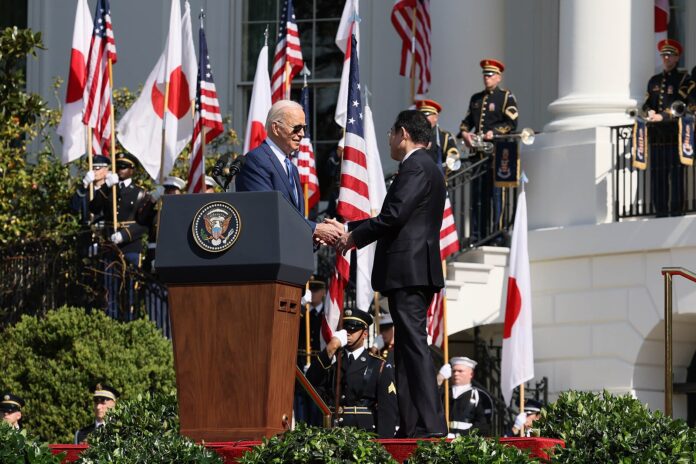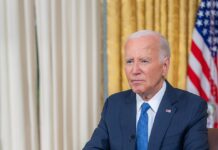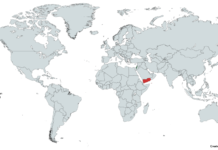Yesterday, during a state visit at the White House, the United States and Japan announced a strengthened partnership through a series of new military agreements, marking a concerted effort to enhance defense capabilities in response to China’s growing influence in the region. President Joe Biden and Japanese Prime Minister Fumio Kishida revealed plans for increased military cooperation, including the establishment of a joint command structure and the development of a new air missile defense network with Australia.
This collaboration signifies a deepened strategic alliance between the two countries, aiming to ensure more effective and seamless operations between their militaries. Biden, emphasizing the importance of these agreements, announced the collaboration as a substantial advancement in the US-Japan alliance. He also unveiled plans for a trilateral military exercise involving Japan and the United Kingdom, further broadening the scope of their defense partnerships.
The agreements are strategically designed to bolster the defenses of the US and Japanese forces, particularly in scenarios such as a potential Chinese incursion into Taiwan. Biden clarified that these measures are defensive in nature, intended to safeguard regional stability without targeting any specific nation.
Amidst discussions on various global tensions, the leaders underscored their commitment to supporting international order based on the rule of law, explicitly criticizing unilateral actions to alter the status quo by force. The dialogue also covered Russia’s aggression in Ukraine, drawing parallels to potential future conflicts in East Asia.
In addition to defense, Biden and Kishida announced initiatives in technology and space exploration, including collaboration on artificial intelligence and a joint goal to include a Japanese astronaut in upcoming US moon missions. These initiatives reflect Japan’s increasingly prominent role on the global stage, following significant changes to its security laws that have shifted its post-World War II pacifist stance.
The summit resulted in approximately 70 defense cooperation agreements, which include enhancing the US military command structure in Japan and creating forums for missile development and the maintenance of US military assets. This comprehensive approach aims at improving interoperability and planning for both peace and conflict times, underscoring the importance of Japan as a pivotal ally in Asia and a key player in global security.
The joint statement also highlighted potential cooperation with the AUKUS defense partnership, involving advanced technologies like quantum computing and artificial intelligence, indicating a broadening of defense and technological collaboration beyond traditional military hardware.
The state visit, filled with ceremonial grandeur, not only underscored the strong bilateral ties between the US and Japan but also showcased their united front in addressing challenges posed by China and Russia. It offered a platform for Japan to affirm its commitment to regional peace and stability while aligning with the US on critical security and technological fronts.
As the international community closely watches these developments, the strengthened US-Japan alliance through these new military and technological agreements sends a clear message of their shared commitment to maintaining a free and open Indo-Pacific region. This partnership not only addresses immediate security concerns but also lays the groundwork for future collaboration in defense, technology, and space exploration, reinforcing the strategic importance of the US-Japan alliance in countering challenges to global stability.
Image is licensed under the Government of Japan Standard Terms of Use (Ver.2.0) and was created by 内閣官房内閣広報室.









